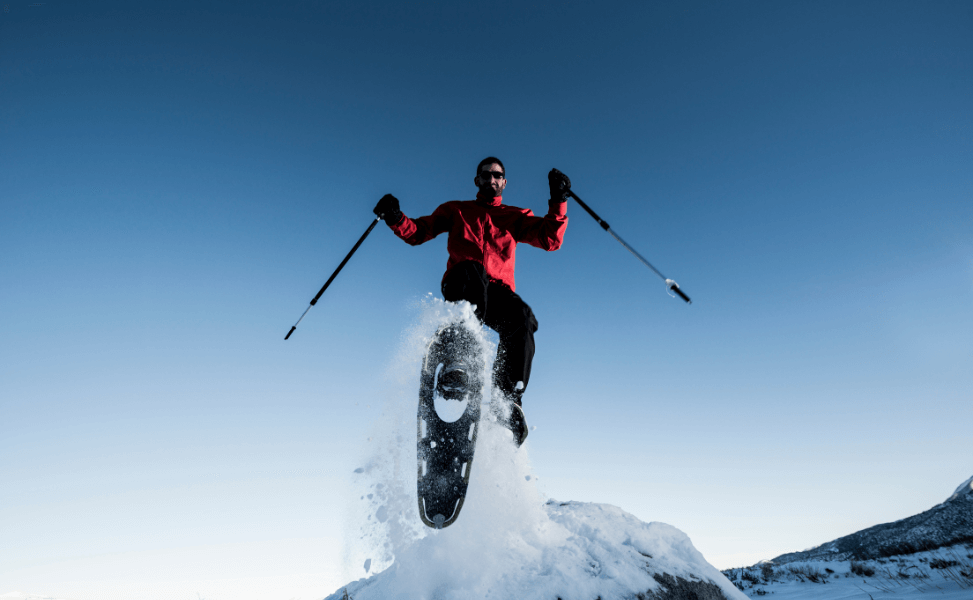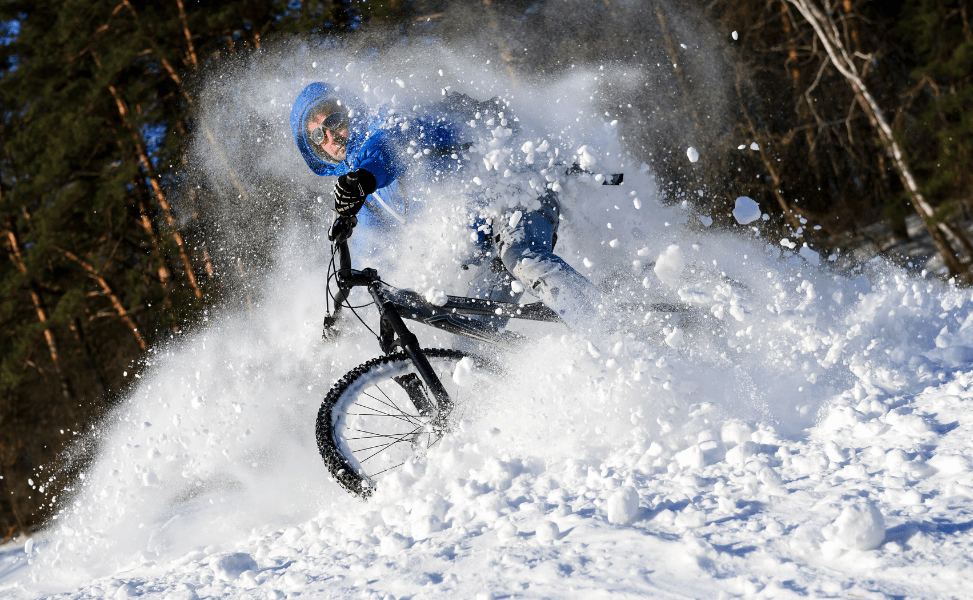
With cold weather well and truly here, it's time to make the most of it and hit the slopes! Capture you and your friends on the snowy mountains, no matter what winter sport you’re trying your hand at. In this article, we’re going to dive into our picks of the essential equipment and camera settings you need to take breathtaking photos this winter!
What are the challenges when taking sports photography in winter?
Many winter sports involve snow, which can create bright and white backgrounds. This can be tricky to capture the landscapes in their glory when your camera settings aren’t ready for the exposure. It’s also important to consider safety when taking photos mid action. It can be dangerous to stop mid sport to capture an image, and also distracting to be trying to take photos mid-action.
Lastly, choosing the right equipment is essential to capturing great images that suit the sport and your surroundings. Make sure you pick the right camera to try and take images seamlessly and safely.

What is the essential equipment for winter sports photography?
There’s a range of great equipment suited to winter sports photography, to help take great images while also remaining protected from the cold, wet environments. Here are our essential picks.
- Cameras: For photography on the go, an action camera is a great investment for those who want to capture the action mid-sport. You can attach an action camera to your helmet or in a harness over your chest for hands-free convenience. For those capturing action from the sidelines, a DSLR or mirrorless camera with fast autofocus capabilities would be a great investment.
- Lenses: To capture the action from a distance a telephoto lens would be a great option. Look for a lens with a focal length between 70-200mm or 100-400mm so you never miss a moment.
- Tripods: With a fast shutter speed, the risk of blurry images is much higher. Propping your camera on a tripod will help reduce the risk of blur as your subjects fly by. Tripods are also great to help take images and videos of yourself safely. Simply set up the camera and gear before you start your sport from the sidelines and you’ll have some great images or videos to check out once you’ve finished your run.
- Protective gear: With winter, comes snow and rain. Protect all your gear with a range of protective equipment to stop water damage. Protective equipment can also help prevent damage from bumps and knocks which is inevitable when it comes to action sports photography.
- Drones: For cool aerial shots, drones can be a great way to capture the action from above. Many drones can be programmed to follow the motion as you make your way down a run or move about in your sport.
To learn more about sports photography, check out our Sports Photography Equipment Guide on the Camera House blog.
Which camera settings are crucial for winter sports action?
Getting the settings right for winter sports photography is essential before the action starts. Here are our recommendations for how to set up your camera.
- Shutter speed: For fast paced action, you need a fast shutter speed to capture the moving subject with clarity. Set the camera up at 1/1000s and play around to see what works. Check out our article Shutter Speeds Explained to learn more.
- Aperture: You want to create a shallow depth of field to try and showcase the subject in the action. Try a wide aperture using a low f-stop number and adjust as needed. Check out our articles, Understanding Aperture and Understanding Focus Points to learn more.
- ISO: Start with a low ISO setting and adjust depending on the lighting conditions in the environment you’re shooting in. You may need to increase the setting to reduce the noise produced. Check out our article Confused About ISO to learn more.
- Shooting modes: Try to use a continuous shooting mode to capture the action quickly and clearly.
To learn more about camera settings for sports photography, check out our article How to Shoot Sports Photography.

Protect camera gear from harsh winter conditions
In the cold and wet winter conditions, you want to make sure that your expensive camera equipment is protected. Here are some ways to ensure your equipment is safe.
- Weather-sealed equipment: For full protection, weather-sealed equipment will give you peace of mind that no water, or cold-temperatures will affect your camera.
- Lens hoods: An easy addition to your kit, a lens hood will protect your lens from light rain drops and minimise any lens flare which is common in the snow.
- Camera covers: Protect your entire camera setup from rain or snow with a camera cover to throw over your equipment.
Some advanced techniques for creating dynamic winter sports photos
To create dynamic and impactful winter sports images, there are some advanced techniques you can implement to get professional shots every time.
- Panning: Move with the subject to capture the sense of the speed and sport they are performing in. By moving with the subject with a fast shutter speed, you’re more likely to capture the perfect moment of action.
- Off-camera flash: Flash has the ability to create a striking image against snowy or foggy backdrops. By using an off-camera flash you’ll have a powerful source of light that you can rely on in different lighting conditions.
- Long exposures: With a long exposure you can capture the movement and energy of the sport along with trails from their movement. It’s a creative shooting style that can create unique and different images.
To learn more, check out our article Sports Photography Tips.
Shop equipment for sports photography in winter at Camera House
Take advantage of Camera House’s knowledgeable staff in-store and online and ask them which winter sports photography equipment is perfect for you! Check out our shipping information online and enjoy flat-rate delivery Australia-wide, or check out our store locator to visit a Camera House store near you. Explore more great articles on Camera House’s blog.
